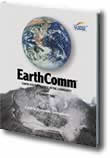Below are storylines that were designed by Cheryl Mosier, an Earth Science Teacher at Columbine High School in Littleton, Colorado.
Big Idea:
- Natural hazards associated with Earth processes and events include drought, floods, storms, volcanic activity, earthquakes and climate change. They pose risks to humans, their property and communities. Earth science is used to study, predict, and mitigate natural hazards so that we can assess risks, plan wisely, and acclimate to the effects of natural hazards.
- Natural hazards associated with Earth processes and events include drought, floods, storms, volcanic activity, earthquakes and climate change. They pose risks to humans, their property and communities. Earth science is used to study, predict, and mitigate natural hazards so that we can assess risks, plan wisely, and acclimate to the effects of natural hazards.
|
|
Activity 1 – Taking a Ride on a Lithospheric Plate |
Activity 2 – Plate Boundaries and Plate Interactions |
Activity 3 – What Drives the Plates? |
Activity 4 – Effects of Plate Tectonics |
Activity 5 – The Changing Geography of Your Community |
|
Key Evidence Learned |
- which direction and how fast North America is moving |
- types of plate boundaries (divergent, convergent, transform) |
- density of liquids and rocks - how density impact Earth layers and structure - how temp effects density |
- how earthquake and volcano location relate to plate boundaries - volcanic arcs – types and formation |
- Pangea formation and break up using evidence to support |
| Connection to: |
- how GPS works - how we know the plates are moving (sea floor spreading, magnetic stripes, mountains) |
- how to identify which boundary is between two plates - our community’s nearest plate boundary |
- causes of plate motion - structure of Earth - convection cells in the mantle |
- hot spots - how continents grow - landforms at plate boundaries - how boundaries can affect the interior of a continent |
- prediction of where the continents will be in 250 million years - why Wegener was criticized - evidence we use today that Wegener didn’t have |
|
Big Idea |
- Earth is made of plates that move |
- plate have different boundaries that create different effects |
- Earth’s interior is based on density - causes of plate motion |
- how boundaries create different landforms |
- how the Earth has changed over time - development of plate tectonic theory |
|
Real Life and Chapter Challenge |
- how North America is moving - where North America will end up - evidence for movement |
- different types of boundaries - nearest boundary to our community |
- how we know what the layers of the Earth are - how the plates move |
- types of boundaries explain where EQ and volcanoes are located - how <STATE> has been affected by plate tectonics - Yellowstone |
- how the theory was developed - evidence we use to support theory - where the continents may end up in the future |
|
Geosphere |
- movement of plates - how we know the plates are moving |
- plate boundaries and identification |
- density of rocks determine the type of boundary - causes of plate motion - structure of Earth |
- EQ and volcano patterns - how volcanic areca are formed - where hot spots are - how continents grow - different landforms at boundaries |
- how the Earth has changed over time - formation of plate tectonic theory |
|
Hydrosphere |
- boundaries in the ocean - ocean floor features - evidence from the ocean floor |
- EQ and volcanoes in the ocean - volcanic island arcs - Hawaii - trenches |
- how ocean basins open and close over geologic time |
||
|
Atmosphere |
- climatology evidence |
||||
|
Cryosphere |
- glacial evidence |
||||
|
Biosphere |
- fossil evidence |

